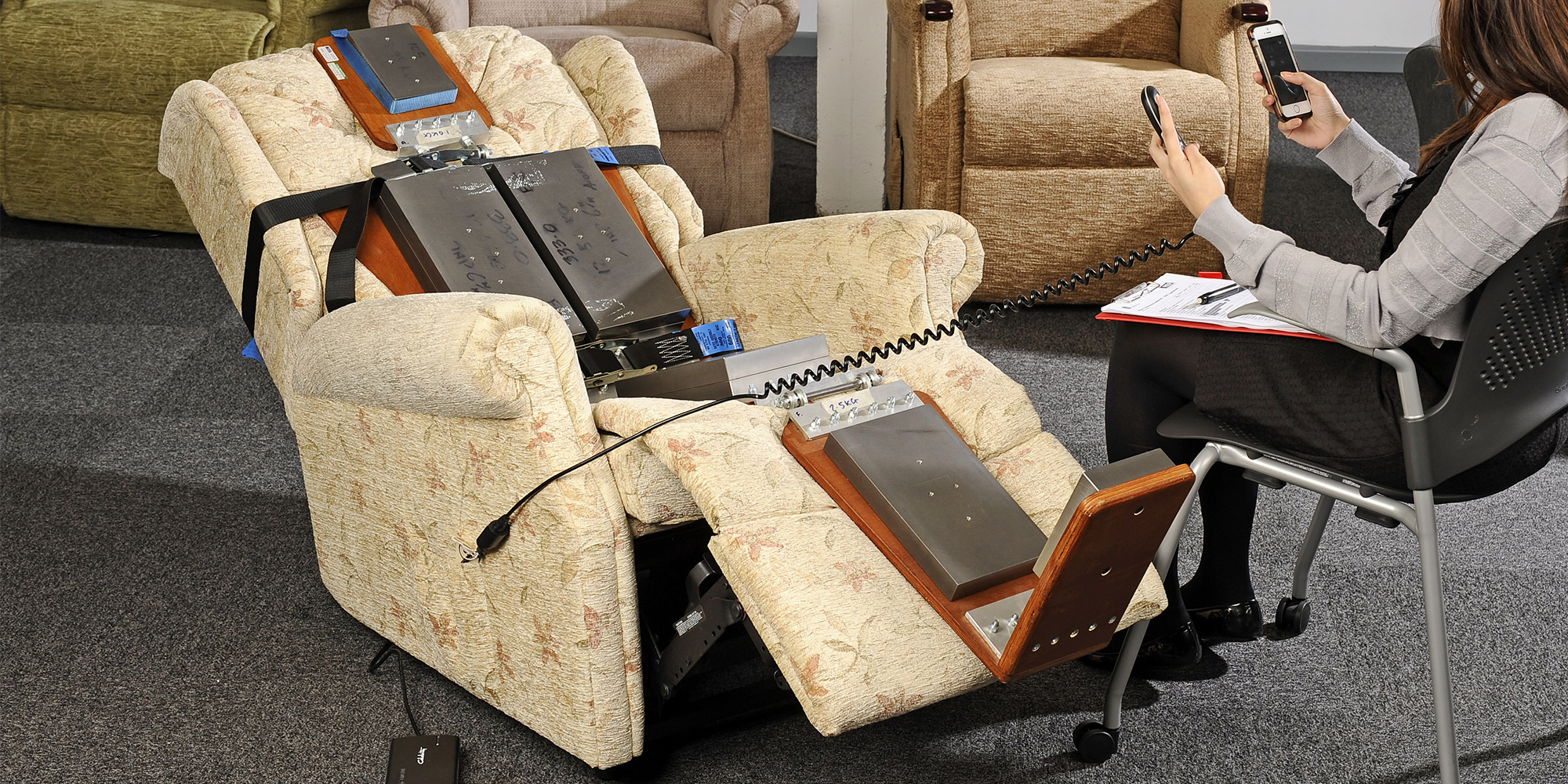ASTM F1858 Stability Testing of Reclining Chairs and Lounges
The ASTM F1858 standard is a widely recognized protocol designed to evaluate the stability of recliners and adjustable furniture. This test ensures that these items can safely support users, particularly during critical movements like reclining or adjusting positions. The testing procedure involves applying specific loads at particular angles and monitoring how the chair maintains its structure without tipping or collapsing.
Recliners are complex pieces of furniture with multiple moving parts, including mechanisms for tilting, elevating, and locking into various positions. Ensuring their stability is critical not only from a safety standpoint but also to maintain brand reputation and customer satisfaction. The ASTM F1858 test addresses this by simulating real-world conditions under which the chair might be used.
For instance, the test requires that the recliner can support a specified weight (typically 227 kg or more) at various angles of recline. This ensures that even when fully reclined to an angle of 150 degrees, the chair will remain stable without tipping over. The test also checks for the integrity of mechanical components like the locking mechanisms and the durability of the frame.
The stability testing process involves carefully preparing the specimen, which is the recliner or lounge being tested. This includes ensuring that the chair is in its fully upright position before applying loads. Once prepared, a series of tests are conducted to assess the chair’s ability to withstand imposed forces without compromising its structural integrity.
Instrumentation used for these tests can range from simple load cells to more sophisticated systems capable of measuring displacement and force distribution across various points on the chair. Reporting is comprehensive and includes detailed observations about the stability, any anomalies observed during testing, and recommendations for improvements if necessary.
The importance of ASTM F1858 cannot be overstated, especially in industries where safety and comfort are paramount. Compliance with this standard helps manufacturers ensure that their products meet or exceed industry expectations, thereby enhancing consumer confidence and potentially leading to greater market share.
Why It Matters
The stability of recliners and adjustable furniture is more than just a feature; it’s a critical aspect of product safety. Consumers expect these items to perform reliably and safely under various conditions, especially when they are in use or during adjustment movements.
- User Safety: A stable chair ensures that users can move freely without fear of tipping over, which is particularly important for elderly individuals and those with limited mobility.
- Brand Reputation: Consistent compliance with standards like ASTM F1858 can significantly enhance a brand’s reputation. It demonstrates a commitment to quality and safety, which translates into customer trust and loyalty.
- Market Differentiation: By exceeding industry standards, manufacturers can differentiate their products from competitors, potentially leading to higher sales and market penetration.
Stability testing also plays a crucial role in R&D by providing valuable insights that help improve the design and manufacturing processes. This continuous improvement cycle ensures that products not only meet current standards but are also prepared for future regulatory changes or evolving consumer expectations.
International Acceptance and Recognition
The ASTM F1858 stability test is recognized globally within the furniture industry as a robust method to ensure product safety. Its acceptance spans across various regions, including Europe (where it aligns with EN standards) and Asia-Pacific markets.
In the European Union, the equivalent standard often used alongside ASTM F1858 is EN ISO 20769:2013. This harmonized standard ensures that furniture manufacturers can achieve mutual recognition of their products across different jurisdictions within Europe.
The standard's widespread adoption underscores its importance and reliability in the international market. Compliance with ASTM F1858 is a significant factor for importers, retailers, and end-users who prioritize safety and quality in their purchasing decisions.
Competitive Advantage and Market Impact
- Enhanced Safety: By adhering to ASTM F1858, manufacturers can provide products that are safer for consumers, thereby reducing the risk of accidents or injuries. This can lead to increased customer satisfaction.
- Better Brand Image: Compliance with recognized standards like ASTM F1858 enhances a company’s reputation as an industry leader in product safety and quality.
- Increased Market Share: Demonstrating commitment to high-quality products through rigorous testing can attract more customers, contributing to increased market share.
- Potential for Innovation: The continuous improvement driven by ASTM F1858 encourages innovation in furniture design and manufacturing processes. This can lead to the development of new features or improvements that set a brand apart from competitors.
The competitive advantage gained through compliance with ASTM F1858 extends beyond just safety; it also includes operational efficiencies, reduced liability risks, and enhanced marketability. These factors contribute significantly to a company’s overall success in the furniture industry.





